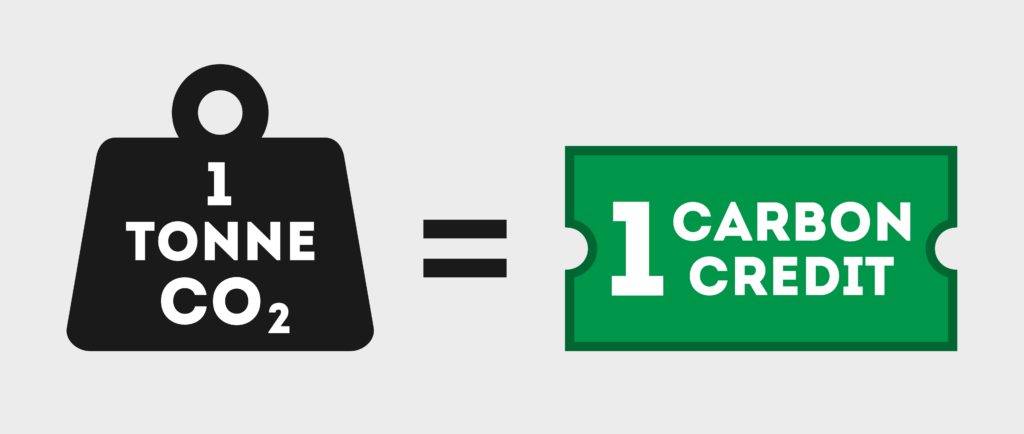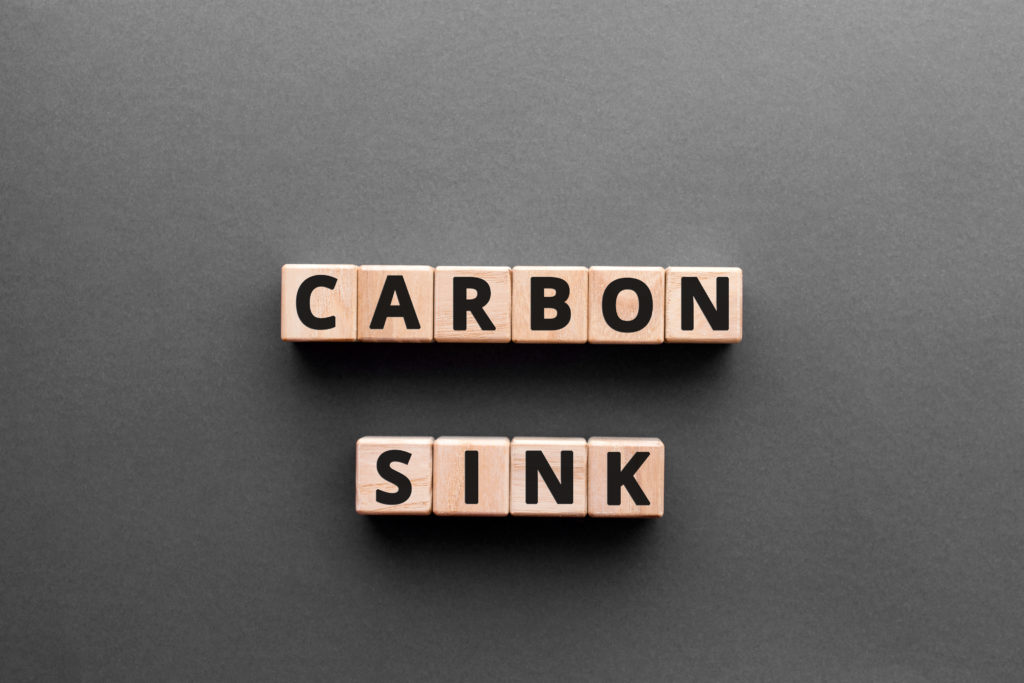What is a Carbon Sink?
A carbon sink is anything, natural or otherwise, that accumulates and stores some carbon-containing chemical compound for an indefinite period and thereby removes carbon dioxide (CO2) from the atmosphere.
Carbon sinks are a vital part of the Earth’s carbon cycle, and help to regulate the amount of CO2 in the atmosphere. Plants and trees are the most common type of natural carbon sink, as they absorb CO2 during photosynthesis. Other examples of carbon sinks include oceans, soils, and rocks.
Carbon sinks play an important role in mitigating climate change, as they help to remove excess carbon dioxide from the atmosphere. In order to be effective, however, carbon sinks must be managed properly. This means avoiding activities that would release the stored carbon back into the atmosphere, such as deforestation or burning fossil fuels.
The four types of carbon sinks are:
- Vegetation: This includes all plant life, such as trees, bushes, and grasses. When these plants photosynthesize, they take in carbon dioxide and release oxygen.
- Soil: Soil contains organic matter, which is made up of dead plants and animals. As organic matter decomposes, it sequesters (or stores) carbon.
- Oceans: The oceans are the largest reservoir of carbon on Earth. They absorb about 30% of the CO2 that is emitted into the atmosphere each year.
- Rocks: Carbon can be stored in rocks through a process called carbon sequestration. When CO2 is injected into rocks deep underground, it reacts with minerals to form solid carbons.
Forests as a Carbon Sink

While all types of carbon sinks are important, forests play a particularly vital role in sequestering carbon. According to the Food and Agriculture Organization of the United Nations (FAO), forests currently store approximately one-third of all the carbon in terrestrial ecosystems.
Forests provide many other benefits besides carbon sequestration. They are home to a large percentage of the world’s biodiversity, and play an important role in regulating local climates and water cycles. In addition, forests provide critical ecosystem services such as watershed protection and soil stabilization.
The implementation of sound forest management practices is essential to maintaining the long-term health and productivity of forests as carbon sinks. Things like deforestation, forest fires, and poor logging practices can all release large amounts of stored carbon back into the atmosphere, negating the climate benefits that forests provide.
Soil as a Carbon Sink
Soil is another important carbon sink, and one that is often undervalued. Soil organic matter (SOM) is composed of dead plant and animal matter, and it plays a critical role in sequestering carbon.
According to the United States Department of Agriculture (USDA), soil organic matter can store up to four times its weight in carbon. This makes soil an important buffer against climate change, as it can help to mitigate the release of atmospheric CO2.
In order to maximize the carbon-sequestering potential of soils, it is important to practice sound land management practices. This includes avoiding tillage (plowing), which can release stored carbon back into the atmosphere. In addition, maintaining healthy soil fertility through the use of organic matter and cover crops can help to improve soil health and carbon-sequestering capacity.
Oceans as a Carbon Sink
The oceans are the largest reservoir of carbon on Earth, and they play a vital role in regulating atmospheric CO2 levels. According to the Intergovernmental Panel on Climate Change (IPCC), the oceans currently absorb about 30% of all the CO2 that is emitted into the atmosphere each year. This helps to mitigate the greenhouse effect, and makes the oceans an important part of the global carbon cycle.
While the oceans are a major carbon sink, they are also vulnerable to climate change. Rising temperatures and acidification caused by increasing atmospheric CO2 levels are having a negative impact on marine ecosystems. These changes are already causing problems for marine life, and are expected to have major impacts on global food security in the future.
Rocks as a Carbon Sink
Rocks can also store carbon, through a process called carbon sequestration. When CO2 is injected into rocks deep underground, it reacts with minerals to form solid carbons. This process can permanently remove large amounts of CO2 from the atmosphere, making it an important tool in the fight against climate change.
Carbon sequestration in rocks is a relatively new technology, and it is still being developed. Currently, there are a limited number of commercial sequestration projects underway, but this is expected to change in the future as the technology matures.
While carbon sequestration in rocks is promising, it is not without its challenges. Injecting large amounts of CO2 into rocks can cause seismic activity, and there is a risk that the stored carbon could eventually leak back into the atmosphere.
Kyoto Protocol
The Kyoto Protocol is an international agreement that was adopted in 1997 to help address the issue of climate change. The Protocol sets targets for greenhouse gas emissions reductions, and includes a number of mechanisms to help countries meet these targets.
One of the key mechanisms of the Kyoto Protocol is the Clean Development Mechanism (CDM). The CDM allows developed countries to offset their emissions by investing in clean development projects in developing countries. These projects can include things like renewable energy, energy efficiency, and forestry, and has been successful in promoting investment in clean development projects.
Carbon Markets
Carbon markets are a market-based approach to emissions trading. It is a system where companies and countries can buy and sell allowances for their emissions, including through the financing of various carbon sinks. The carbon market is one way to help reduce greenhouse gas emissions, as it provides an incentive for companies to reduce their emissions.
The carbon market was created by the Kyoto Protocol, and it is currently the largest market-based approach to climate change. Carbon markets are expected to grow in the future as more countries adopt policies to combat climate change.
Carbon Offsets
Carbon offsets or carbon credits are a way to offset your emissions by investing in projects that reduce greenhouse gas emissions. Carbon offsets can be used to offset emissions from things like travel, home energy use, and even events. Carbon offsets are a voluntary way to reduce your emissions, and they can be a great way to offset your carbon footprint.

One Carbon credit or carbon offset represents a tonne of carbon dioxide that has been removed from the atmosphere. Carbon credits can be bought and sold, and they are often used to offset emissions from things like travel, energy use, or daily lifestyle habits. Investing in preserving and renewing carbon sinks is a major pillar of carbon credits.
Voluntary Carbon Offsets
Voluntary carbon offsets are carbon credits that are not required by law. They are a way for individuals and businesses to offset their emissions on a voluntary basis. There are many different types of voluntary carbon offsets, and they can be bought and sold in the carbon market.
Voluntary carbon offsets are a great way to offset your emissions if you are not required to by law. They provide an incentive for companies to reduce their emissions, and they can be used to offset your carbon footprint.
Protection of Carbon Sinks
Protecting carbon sinks is an important part of mitigating climate change. Carbon sinks play a vital role in the global carbon cycle, and their protection is essential to maintaining the Earth’s climate.
There are a number of ways to protect carbon sinks, including:
1) Reducing deforestation and protecting forests
2) Improving agricultural practices
3) Conserving wetlands
4) Protecting oceans and marine life
All of these activities help to preserve carbon sinks and prevent greenhouse gas emissions from entering the atmosphere.

